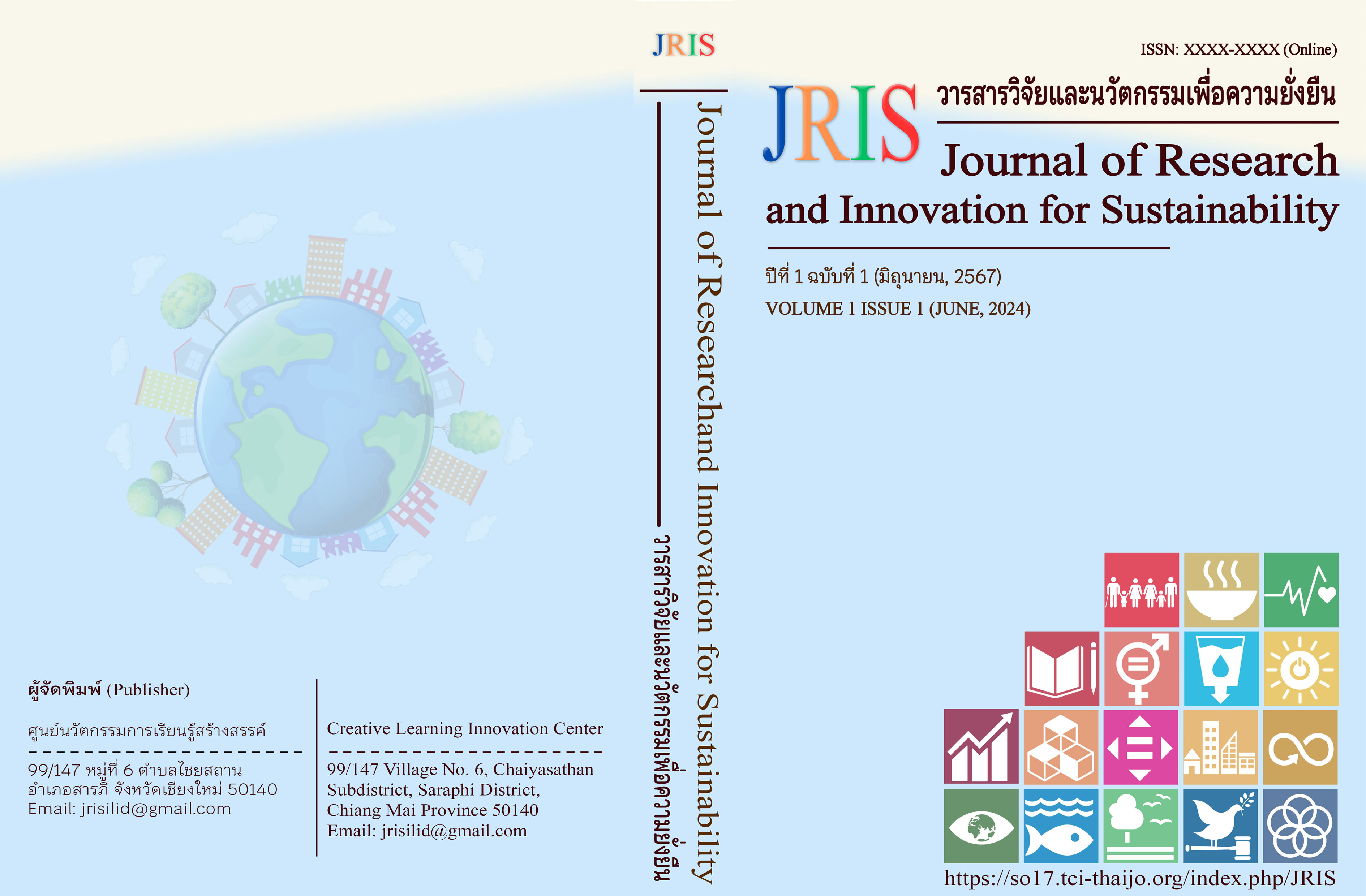THE COLLAPSE OF ALL BRILLIANT HOPES: THE EXAMPLES OF REFLECTIONS ON THE COLLAPSE OF THE FAMILY INSTITUTION IN THAI LITERATURE
Main Article Content
Abstract
This research paper aims to study of the examples of reflections on the collapse of the family institution in Thai literature “The collapse of all brilliant hopes”. The researcher used a qualitative study method based on the concept of reflection of the family institution in 2 areas: family characteristics. and family problems, by analyzing literary texts and presenting the results of the study in the form of descriptive analysis. The results of the study found that:
1) The reflection of the family institution family characteristics in the literature, four types of families are presented: single-parent families, blended families, and families that empower the man or husband to lead the family and families where family members know their roles and responsibilities.
2) The reflection on the family institution family problems in the literature, there are 12 problems that arise in families, including the problem of violence, divorce problems family conflict problems spouse's infidelity problem. The problem of abandoned children economic problems Leads to the problem of unemployment or underemployment, poverty problem, problems with unconscious behavior due to drunkenness teenage boy problems health problems and the problem of the lack of a pillar in the family due to the death of a family member.
Article Details

This work is licensed under a Creative Commons Attribution-NonCommercial-NoDerivatives 4.0 International License.
Copyright License
Permission is granted to use text, content, images, or any other material from the publication for anyone who wishes to read, download, copy, distribute, print, search, or link to the full text of the article, compile data for indexing, transfer data to software, or use for any other legal purposes, provided that it is not used for commercial purposes or for business benefit. All articles published in the Journal of Research and Innovation for Sustainability are distributed under a Creative Commons Attribution-NonCommercial-NoDerivatives 4.0 International License: https://creativecommons.org/licenses/by-nc-nd/4.0/
References
จำนงค์ อดิวัฒนสิทธิ์, เสาวคนธ์ สุดสวาสดิ์, เฉลียว ฤกษ์รุจิพิมล, ประพีร์ วิริยะสมบูรณ์, สุดา ภิรมย์แก้ว และ
สุรพันธ์ เพชราภา. (2552). สังคมวิทยา (พิมพ์ครั้งที่ 14). สำนักพิมพ์มหาวิทยาลัยเกษตรศาสตร์.
ตินกานต์. (2563). สลายสิ้นซึ่งความหวังรังรอง. สำนักพิมพ์ระหว่างบรรทัด.
ถวัลย์ มาศจรัส. (2540). ตัวอย่างการเขียนเรื่องบันเทิงคดีและสารคดีสำหรับเด็กและเยาวชน. ธารอักษร.
นวลอนงค์ สุวรรณเรือง. (2544). สถาบันครอบครัวในนวนิยายของ ชมัยพร แสงกระจ่าง, น. แนวคิดและวิธีนำเสนอแนวคิด [วิทยานิพนธ์ปริญญาโท]. มหาวิทยาลัยมหาสารคาม.
ภาวิณี พนมวัน ณ อยุธยา. (2564). ภาพสะท้อนสังคมและวัฒนธรรมที่ปรากฏในเรื่องสั้นหนังสือวันเด็กแห่งชาติ. วารสารศรีนครินทรวิโรฒวิจัยและพัฒนา สาขามนุษยศาสตร์และสังคมศาสตร์, 13(26), 77-89.
ศูนย์วิจัยและพัฒนาครอบครัวไทย. (2553). รายงานการวิจัย เรื่องการศึกษาและพัฒนารูปแบบการเสริมสร้างหลักประกันความมั่นคงของครอบครัว. มหาวิทยาลัยสุโขทัยธรรมาธิราช. http://www.ssdc.msociety.go.th/themes/social/images/downloads.
สุพร อภินันทเวช. (2550). แนวคิดและกรณีศึกษาการสร้างเสริมสุขภาพจิต ในการพัฒนาสถาบันการศึกษาสาธารณสุขให้เป็นองค์กรการสร้างเสริมสุขภาพ. ศุภพลอินเตอร์พริ้นท์.
สุพิศ เอื้องแซะ. (2560). ภาพสะท้อนสังคมและกลวิธีการนำเสนอเรื่องสั้นในนิตยสาร คู่สร้างคู่สม [วิทยานิพนธ์ปริญญาโท]. มหาวิทยาลัยราชภัฏเชียงใหม่.
สุวรรณา เกรียงไกรเพ็ชร. (2541). ความขัดแย้งทางค่านิยมที่ปรากฏในเรื่องสั้นไทยสมัยพัฒนาเศรษฐกิจ (พ.ศ. 2493 – 2523). วารสารภาษาและหนังสือ, 29(1), 125 – 148.
สำนักงานกิจการสตรีและสถาบันครอบครัว. (2562). นิยามและประเภทของครอบครัว. https://infocenter.nationalhealth.or.th/sites/default/files/.pdf
อิงอร สุพันธุ์วณิช. (2551). เลื่อมลายสายรุ้ง, น. ภาพสะท้อนสังคมในนวนิยายปัจจุบัน (พิมพ์ครั้งที่ 2). คณะอักษรศาสตร์ จุฬาลงกรณ์มหาวิทยาลัย.
Mo Lingfen. (2560). ปัญหาครอบครัวในสังคมไทย, น. ภาพสะท้อนจากนวนิยายไทย ช่วงพ.ศ. 2508-2557. วารสารศิลปศาสตร์ปริทัศน์, 12(23), 1-12.

